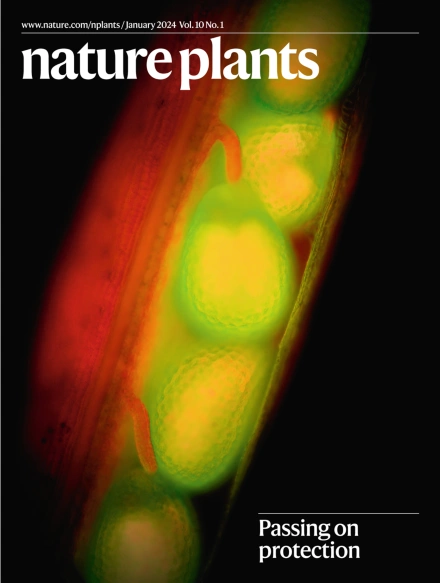Hordeum I genome unlocks adaptive evolution and genetic potential for crop improvement
IF 15.8
1区 生物学
Q1 PLANT SCIENCES
引用次数: 0
Abstract
Crop wild relatives (CWRs) are invaluable for crop improvement. Among these, Hordeum I-genome species exhibit exceptional tolerance to alkali and salt stresses. Here we present a chromosome-scale genome assembly of Hordeum brevisubulatum (II, 2n = 2x =14) and genome resequencing of 38 diploid germplasms spanning 7 I-genome species. We reveal that the adaptive evolution of the H. brevisubulatum genome is shaped by structural variations, some of which may contribute to its adaptation to high alkali and salt environments. Evolutionary duplication of the stress sensor-responder module CaBP-NRT2 and the horizontally transferred fungal gene Fhb7 were identified as novel alkaline–saline tolerance mechanisms. We also demonstrate the potential of the Hordeum I genome in crop breeding through the newly synthesized hexaploid Tritordeum (AABBII) with enhanced alkaline–saline tolerance. Our study fills critical gaps in Hordeum genomics and CWR research, advancing introgression of CWR resources into current crops for sustainable agriculture. The authors present a reference genome for Hordeum I-genome species. This work unravels genomic features that drive adaptation to salt and alkali environments and could aid in improving crop resilience.


Hordeum I基因组解锁作物改良的适应性进化和遗传潜力
作物野生近缘种对作物改良具有重要意义。其中,Hordeum i -基因组物种对碱和盐胁迫表现出特殊的耐受性。在这里,我们提出了一个染色体尺度的基因组组装的Hordeum brevisubulatum (II, 2n = 2x =14)和基因组重测序的38二倍体种质跨越7个i基因组物种。我们发现,短孔猴基因组的适应性进化是由结构变异塑造的,其中一些结构变异可能有助于其适应高碱和高盐环境。应力传感器-应答模块CaBP-NRT2的进化重复和水平转移的真菌基因Fhb7被确定为新的碱盐耐受性机制。我们还通过新合成的具有增强耐碱性的六倍体Tritordeum (AABBII)证明了Hordeum I基因组在作物育种中的潜力。我们的研究填补了Hordeum基因组学和CWR研究的关键空白,推进了CWR资源向当前作物的渗透,促进了可持续农业。
本文章由计算机程序翻译,如有差异,请以英文原文为准。
求助全文
约1分钟内获得全文
求助全文
来源期刊

Nature Plants
PLANT SCIENCES-
CiteScore
25.30
自引率
2.20%
发文量
196
期刊介绍:
Nature Plants is an online-only, monthly journal publishing the best research on plants — from their evolution, development, metabolism and environmental interactions to their societal significance.
 求助内容:
求助内容: 应助结果提醒方式:
应助结果提醒方式:


